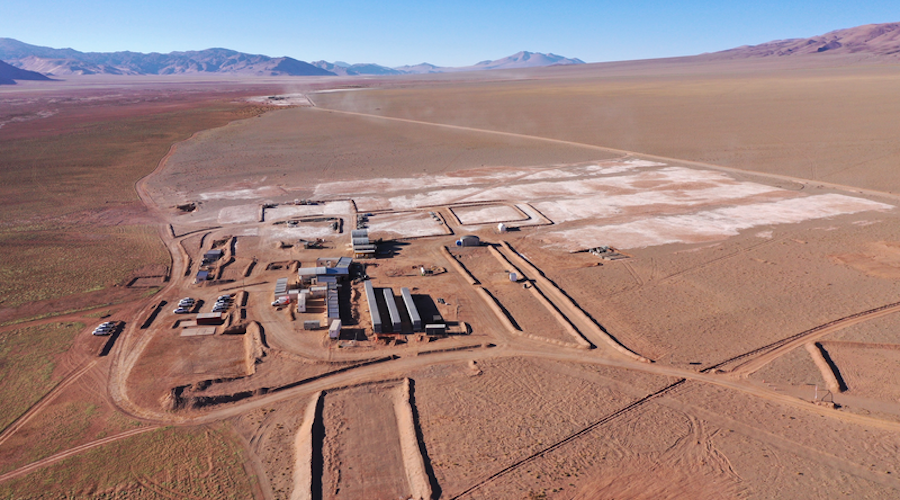Collaboration and co-operation for a safe mining industry
By Mxolisi Mgojo, Chief Executive Officer: Exxaro Resources
The COVID-19 pandemic has been a challenge that no one could have anticipated. It has had a wide-reaching impact on all industries across the globe, and the South African mining sector is no exception.
While necessary precautions were put in place as early as possible, there’s still no telling just how much our industry will be affected in the long term. One thing we do know is that despite what seems to be the light at the end of the tunnel, with the easing of lockdown restrictions, we cannot afford to be complacent.
It has been a challenging time and our industry has proven to be resilient – we’ve been able to use previous health and safety endeavors in the battle against the pandemic. While the impact of COVID-19 has been extreme, it’s because of this past experience and a swift response time that we have been better positioned to face the pandemic than many others.
The importance of being prepared
A month before the pandemic first made landfall in South Africa, the Minerals Council South Africa began producing educational materials for distribution to members, based on communications from the National Institute for Communicable Diseases and the World Health Organisation.
We made our first public pronouncement of a COVID-19 case on 6 March – the day after the first case was diagnosed in South Africa. During the announcement, we recognised the circumstances surrounding our sector and our vulnerability to infectious diseases like COVID-19. At the same time, we announced a 10-point plan which would form the basis of our standard operating procedure (“SOP”).
Defusing safety threats
The SOP included the features necessary to operate a mine in the COVID era. These included considerations like ongoing health education, availability of adequate PPE, sanitisers, testing capacity, quarantine facilities and daily screenings.
We are proud that this procedure became the basis of the regulatory regime after AMCU used legal action to require government to put in place more detailed, formal COVID-19 regulations for the industry.
The reality is that many mining companies have occupational health departments in place that are run by qualified medical professionals who are dedicated, determined and creative thinkers. In fact, in 2002, when our government and its health department were in the hands of HIV/AIDS denialist leaders, it was the mining industry that showed South Africa how to apply anti-retroviral treatment on a mass scale.
What’s more, in 2016, the mining industry’s public health heroes, together with their counterparts in the unions, the Mine Health and Safety Council, and other government health institutions, launched the Masoyise iTB campaign aimed at the industry’s employees and communities. Thanks to Masoyise iTB, the sector has a TB industry rate that’s lower than the rest of the country.
By the time the COVID-19 pandemic arrived, our industry and its stakeholders had, over the last few decades, developed remarkable expertise in dealing with the spread of infectious diseases. We have since put that expertise to good use in an effort to combat the virus.
Response measures for zero-harm
Despite this, it is well known that restarting mining operations, especially underground operations, after a long break can have adverse safety performance consequences. And even more so since management and employees needed to focus on implementing the SOP.
We couldn’t allow ourselves to neglect other Zero Harm imperatives. So, in addition to focusing efforts on our safety performance, and after talks with other industry leaders, we held a National Day of Health and Safety. The occasion focused on reinforcing behaviour change at home and at work in the face of the COVID-19 pandemic.
Another example of the mining industry collaborating with one another and various stakeholders is the oxygen relief initiative in the Eastern Cape. In addition to providing oxygen and oxygen-related products, we ensured that we had sufficient capacity for quarantining employees and their families and provided treatment facilities too.
Testing and transparency
It was in the case of testing that I believe the industry’s collaboration made a substantial difference to the management of the disease. A number of mining companies, including Exxaro Resources, took the initiative to procure and establish their own testing capacity (machines, testing kits and reagents and qualified staff), or entered into arrangements with private facilities to secure access to increased testing capacity.
To maintain a reasonable standard of openness, we began to issue daily records of the number of tests, cases, and deaths by industry and province while comparing national and global developments. We also held weekly media briefings where we presented a wide range of information and have been open to any queries.
Despite some misinterpretations due to our transparency, we believe we have succeeded in protecting and even enhancing the industry’s reputation in respect of the pandemic.
Data analysis for prevention
The Minerals Council recognised early on that fundamental research was critical to support the mining industry and others in dealing with the impact of the pandemic. The Zero Harm Forum, therefore, re-allocated research funding to focus on three COVID-19 related areas.
First was understanding the disease and its impact, with a particular focus on what makes people vulnerable and what we can do to prevent deaths. Next was determining the effectiveness of control measures in place across the mining industry and what improvements are required.
Work was also undertaken with mining companies and behaviour change experts focused on sharing and understanding leading practices and lessons to change behaviour among employees and in communities.
The third component of this research was the development of a geographic information mapping system to outline the prevalence of transmissions in communities and provide an overview of the coping mechanisms in place in different areas, such as hospitals and clinics.
Maintaining momentum in planning
Our industry’s risk-based approach to safety and health underpins all that we do. And while we’re proud of the measures we have put in place to better manage the disease, we are aware that the same level of caution at our operations must remain if we are to mitigate the risk of a second wave.
What I can assure you is that we, as an industry, are alert to this and have already started making plans – together with our colleagues in labour and government – to ensure that unseen pandemics do not rise and overtake us in ways that could have been prevented. Through collaboration and cooperation, we will overcome.
Share this content:















Post Comment